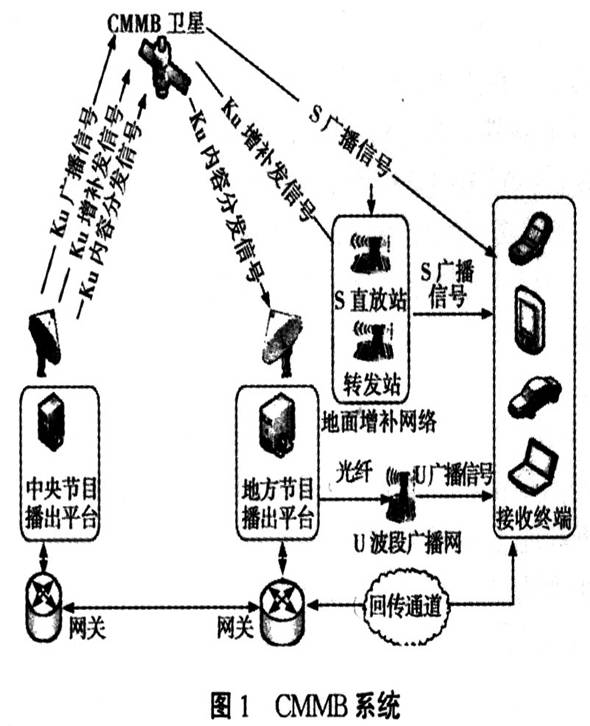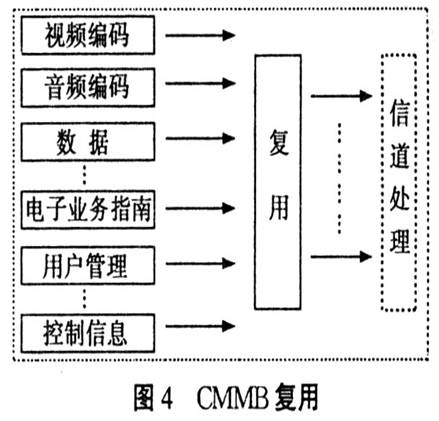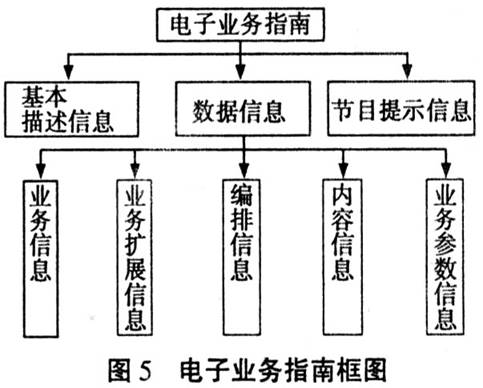On the application of mobile TV-CMMB system technology introduction Mobile TV is a new business that combines the characteristics of mobile communications and broadcast TV. With the evolution of mobile communication networks to high-speed networks, mobile TV first appeared in the form of streaming media. Providing real-time mobile multimedia broadcasting services through broadcast and television overlay networks has become one of the fastest-growing hot spots in contemporary information science. To realize mobile multimedia broadcasting (CMMB) and mobile TV applications, three key points must be solved in technology: first, source coding with high compression ratio; second, channel processing technology with high reliability and strong anti-interference performance, and high spectrum utilization Digital modulation technology; The third is a mobile phone chip with high integration, small size, light weight and low power consumption. CMMB is supported by independent and innovative technologies, adapts to the requirements of low power consumption and low bit rate of the receiving terminal, has excellent mobile reception performance, has new business characteristics that are different from traditional TV broadcasting, and can provide high-quality services for mobile people. 1 System characteristics In 2006, the radio and television system proposed the China Mobile Multimedia Broadcasting (CMMB) system based on independent intellectual property rights (CMMB: China Mobile MulTImedia BroADCasTIng) system. Realize mobile multimedia broadcast signal coverage covering 100% of the country's land, use s-band ground supplementary network for S-band satellite coverage shadow area signal forwarding coverage, use U-band ground coverage network for effective coverage of urban densely populated areas; use wireless mobile communication network to build The return channel realizes interaction, forming a combination of one-way broadcasting and two-way interaction. The seamless coverage system combining the central and local areas is shown in Figure 1. Its main technical characteristics can be summarized as: 1) Applicable to the frequency range of 30Mg ~ 3000Hg, support 8Hg and 2Mg broadband, flexible application; Compared with other existing mobile multimedia broadcasting technologies, CMMB is a natural system-level advantage. We know that the current mobile media broadcasting technology is improved and developed on the basis of existing terrestrial digital TV / sound broadcasting transmission, such as DVB-H developed on the basis of DVB-T and modified on the basis of DVB T-DMB, TMMB, etc. In order to maintain consistency or compatibility with the original transmission technology system, they are inevitably restricted in terms of technological advancement. The other is to adopt a completely new technology system, such as MediaFLO. But note that these standards all use a single terrestrial transmission system for signal coverage, and there are several constraints: 1) Coverage cost: When a single ground transmission is used for coverage, a large number of base stations are required to solve the coverage in the suburbs and far suburbs. At the same time, the connection between the base stations needs to use optical fiber links as shown in Figure 2, so the construction and maintenance costs are large. In comparison, CMMB adopts the technology system of "integration of heaven and earth", which can basically make up for the above deficiencies. 2 Source compression technology Mobile multimedia broadcasting requires low bit rate, high-efficiency video and audio compression coding, China ’s standard AVS, PRA, and international standard H. 264. The AAC standards are all source compression standards suitable for mobile multimedia broadcasting. In actual use, appropriate encoding parameters need to be configured to achieve appropriate compression efficiency and algorithm complexity to meet system requirements. As shown in Figure 3, the source compression section receives the audio and video source data, and outputs it to the multiplexing section after compression and encoding processing. Mobile multimedia broadcasting (MMB) system audio and video services are divided into TV broadcasting services and sound broadcasting services, mobile multimedia broadcasting system source video, audio compression coding standards are used as: 1) In the TV broadcasting service, the video compression coding adopts the AVS standard and H. 264 standard. 2.1 Video compression coding CMMB video compression coding uses AVS, H. The 264 standard adopts advanced compression technology and key algorithms in its transformation, quantization, prediction, entropy coding, etc., so that its video frame rate supports at least 25 frames per second, and the image resolution supports QVGA (320 × 240), QCIF (176 × 144), the video compression code rate supports 64kbps ~ 768kbps. 2.2 Audio compression coding CMMB audio compression coding uses the key algorithms of DRA and AAC, so that the number of audio channels supports mono and stereo. Audio compression code rate supports 32kbps ~ 128kbps. The audio sampling rate supports 48khz, 44.1khz, 32khz. 3 reuse Multiplexing is an important part of the CMMB system. It mainly completes the packaging and arrangement of information such as audio, video, data, and electronic service guides, so that it can be transmitted on the mobile multimedia broadcast channel, as shown in Figure 4. The components of the CMMB multiplexing protocol include multiplexing frames, multiplexing subframes, video segments, audio segments, and data segments. Each physically transmitted broadcast channel frame is composed of multiplexed frames, and multiplexed subframes or control information tables constitute multiplexed frames. The multiplexed subframe includes audio, video and data segments. There can be up to 40 multiplex frames in a CMMB broadcast channel frame. According to the content of the load, it can be divided into two types of multiplex frames. The first multiplex frame (frame ID = 0) is called control. Frames, other multiplexed frames are called service frames. The payload of the control frame is various control information tables, including network information table, continuous service multiplexing configuration table, continuous service configuration table, short-time service multiplexing configuration table, short-time service configuration table, ESG basic description table, emergency broadcast To provide various corresponding control information for the terminal. The payload of the service frame is one or more multiplexed subframes (up to 15), and each multiplexed subframe carries video and audio or data information, which is called a service, that is, each multiplexed subframe is a service application , The basic audio stream, the basic video stream and the data stream of the same service are encapsulated in the same multiplexing subframe. The service multiplexing frame is a collection of multiple services. In summary, CMMB multiplexing, as the basic key protocol in the system, can efficiently and flexibly close multimedia data such as video and audio, which will lay a solid foundation for the smooth development of China's mobile multimedia broadcasting industry. 4 Electronic Business Guide In CMMB, Electronic Service Guide (ESG) is a multimedia broadcast information navigation service. Mainly used to provide users with all business information. It is composed of basic description information, data information and program prompt information as shown in Figure 5. The basic description information describes the distribution and update status of data information in the ESG service, and is transmitted in the control logical channel, that is, in the multiplexed control frame. The data information is expressed in XML, which mainly describes the business information, business extension information, arrangement information, content information and business parameter information related to the mobile multimedia broadcasting service. In the CMMB system, XML is used to describe ESG data information as a special mobile Multimedia broadcast service transmission. Business information is composed of several business elements, each of which describes the attributes of the business, such as business identification, name, language, etc .; business expansion information is composed of several business expansion elements, each of which describes detailed business attributes; Arrangement elements, each element describes the start time of the program, program name and other information; content information is composed of several content elements, each element describes the attributes of the program, such as duration, program introduction, keywords, etc .; business parameters The information is composed of several service parameter elements. Each element describes the parameters required to access the service, such as video, audio code rate, frame rate, etc. The program prompt information describes the summary information of the program playing in the current time period and the next time period of the service, and is transmitted along with the mobile multimedia broadcast video and audio services. 5 Conclusion Different types of standards have mobile phone TVs based on this standard chip. The advantages of a 3G mobile phone that transmits video signals through a telecommunications network are that it can achieve two-way transmission and can easily provide interactive services such as on-demand. The disadvantage is that there is a broadband neck and the cost is closely related to traffic. The advantages of mobile TV that transmit TV signals through broadcast channels There is no bandwidth limitation, and the cost has nothing to do with the flow. The disadvantage is that the signal must be returned through the telecommunications network to achieve two-way interaction. From the perspective of tariff and network environment, the current broadcast-type mobile TV is easier to popularize. It is worth noting that the excellent performance of CMMB during the Olympic Games made us feel that the prospect of CMMB has become increasingly clear. After the smooth trial operation during the Beijing Olympics and Paralympics, the CMMB mobile multimedia business led by the broadcast system has been in 37 cities across the country Investment and operation, in the near future, a unified standard, unified planning, unified construction, unified operation, mobile multimedia mode of the national roaming CMMB system will be displayed in the world. Reloj Inteligente Reloj Inteligente everyone enjoys luck , https://www.eeluckwatch.com
2) Adopt a highly structured, low complexity parity check code (Lopc), an advanced channel coding technology with low complexity, which reduces the signal reception threshold.
3) The use of a slot-based frame structure and orthogonal frequency division multiplexing (OFDM) modulation technology provides a good mechanism for terminal power saving.
4) It adopts logical channel technology, which can be flexibly configured and suitable for real-time broadcast TV, data broadcast and other services.
5) Separate transmission of control parameters and business data, placing key business auxiliary information and channel scheduling control information in a dedicated high protection rate channel for transmission, which can be well adapted to the harsh environment of wireless transmission.
6) Adopt beacon technology to achieve fast synchronization of complex and changeable wireless channels.
2) Coverage dead zone: Just like the mobile communication of terrestrial television, due to geographical constraints, the signal cannot be effectively covered in deserts, oceans, inland depth areas, mountainous areas, and other places where it is difficult to set up base stations, forming a business blind area.
3) Roaming and business continuity: the use of a single terrestrial networking method, on the one hand, the service interruption caused by the limitation of coverage, on the other hand, the roaming user's local network access (different transmission frequencies in different places) management, calculation, etc. will be a Very complicated work requires the unified connection and management of operating platforms across the country through the network.
4) Anti-disaster capability: When different natural disasters occur, it may cause damage to the ground communication or fail to work normally due to damage to the power system, thereby causing the business to be interrupted. 

2) In the sound broadcasting service, audio compression coding adopts DRA standard and AAC standard. 
